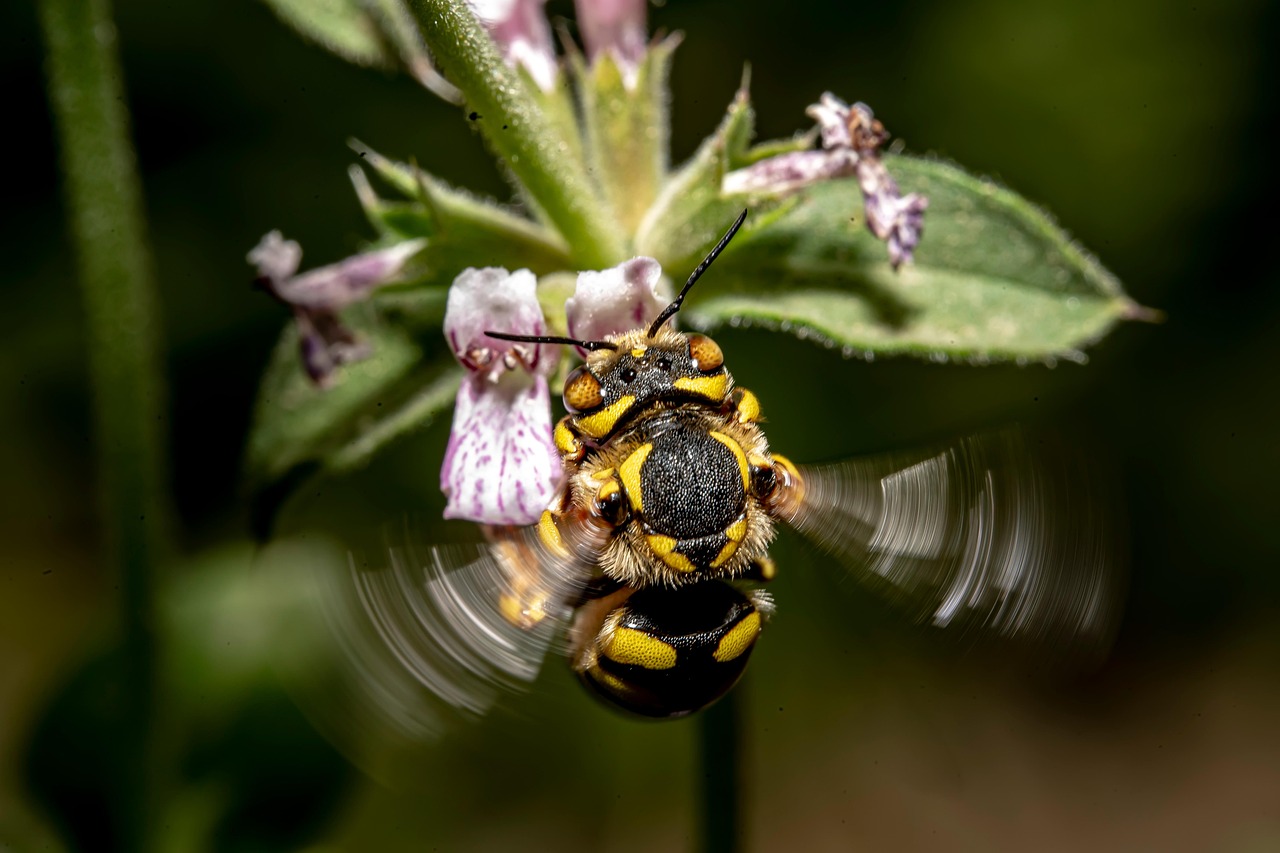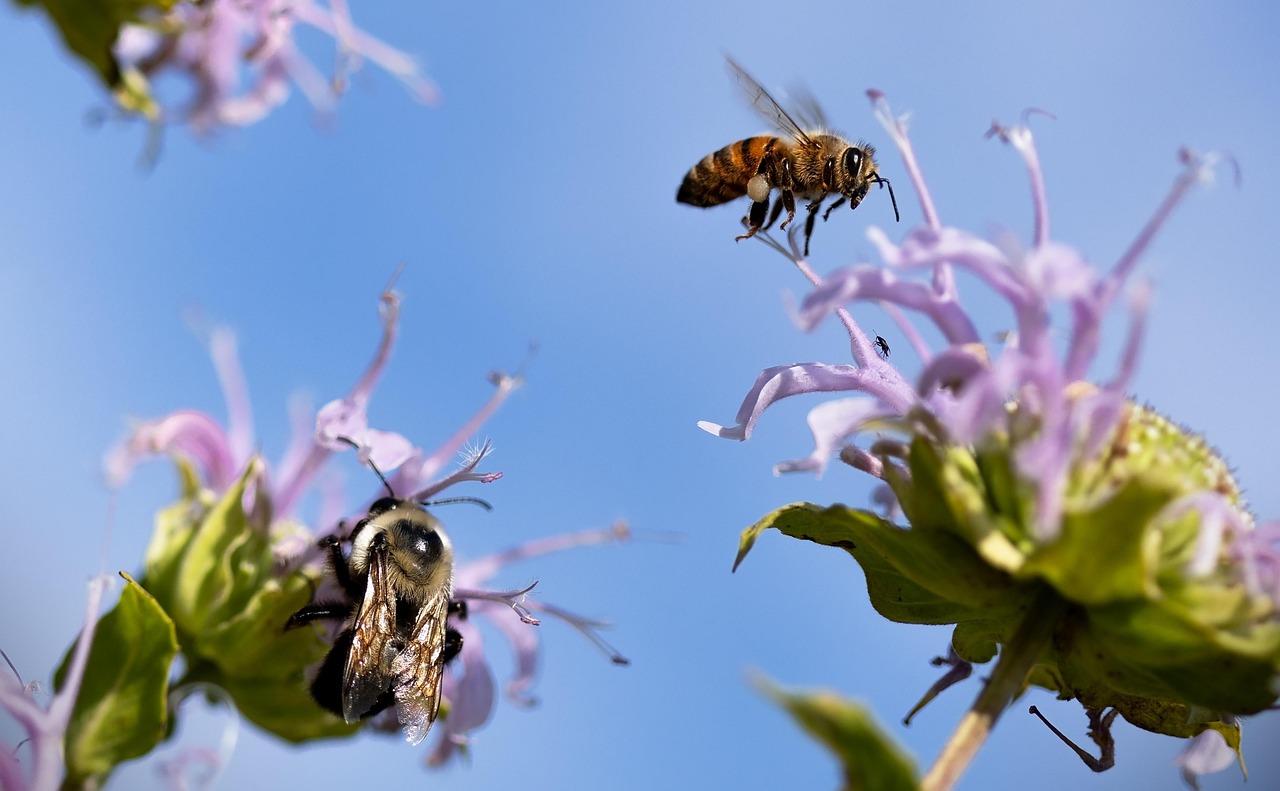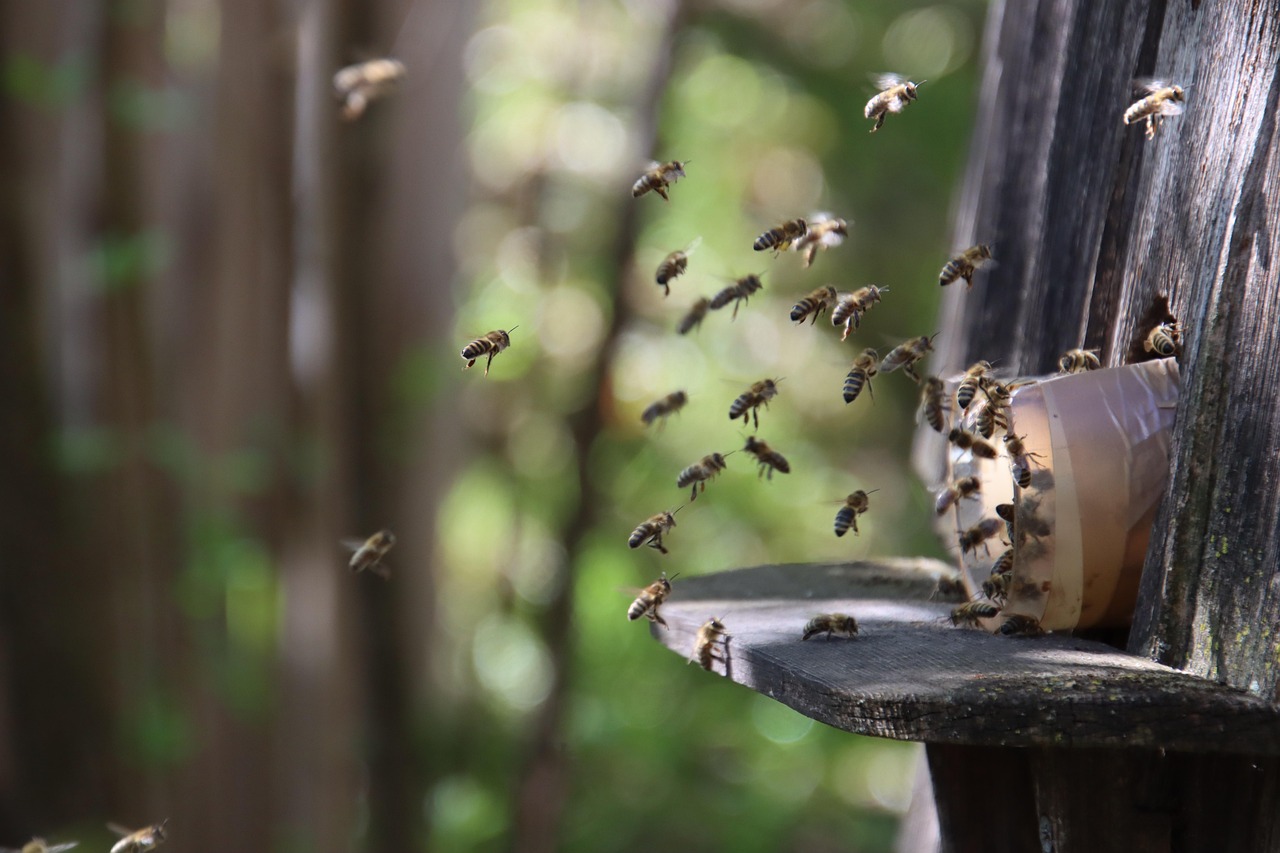Have you ever heard a low, buzzing sound while walking through your garden? If so, you might have encountered ground bees. These fascinating pollinators are often overlooked, but they play a vital role in our ecosystems. Understanding their behavior and habitat can help us appreciate their importance and coexist with them harmoniously.
Ground bees, belonging to various families of bees, are unique because they nest in the ground rather than in hives or trees. This nesting behavior sets them apart from more commonly known honeybees. Ground bees are essential for pollination, contributing significantly to the reproduction of many plants, including fruits and vegetables. Their presence in your garden can indicate a healthy and thriving environment.

Interestingly, there are over 1,000 species of ground bees in North America alone. Each species has its own unique characteristics and nesting habits. Ground bees are generally solitary, with females responsible for building and maintaining their nests while males often reside nearby to mate with females. This solitary lifestyle is one of the many aspects that make ground bees intriguing to observe.
| Characteristic | Description |
|---|---|
| Species Diversity | Over 1,000 species in North America |
| Nesting Habits | Nest in the ground, often in sandy or loose soil |
| Behavior | Mostly solitary; females build nests, males often nearby |
| Pollination Role | Critical for many plants, especially fruits and vegetables |
Understanding Ground Bees
Ground bees vary in size, color, and behavior. They can be recognized by their stout bodies and hairiness, which aids in pollen collection. Some species are black, while others display vibrant colors like yellow or orange. Their appearance can help gardeners and nature enthusiasts identify them.
Their nesting sites are typically found in open areas with sunlight exposure. Ground bees prefer sandy or loose soil for easy digging. Female ground bees dig tunnels where they lay eggs and store pollen to feed their larvae. These nests can sometimes be seen as small holes in the ground, often located in clusters.
Unlike other bee species, ground bees are generally non-aggressive. They rarely sting unless provoked. This behavior makes them safe to have around, even when gardening or spending time outdoors. When left undisturbed, they will go about their business of pollinating plants and caring for their young.
Ground bees also exhibit fascinating foraging patterns. They are known to visit a wide range of flowers, favoring those with accessible pollen and nectar sources. Some species even specialize in particular plants, making them crucial for the reproduction of those species. This specialization highlights the interconnectedness of plants and pollinators in our ecosystems.
Seasonal changes impact ground bee activity significantly. Most ground bees emerge in early spring as temperatures rise and flowers bloom. They spend the warmer months gathering resources for their nests. By late summer or fall, many species will have completed their life cycles and will not be seen again until the next spring.
In summary, understanding ground bees is essential for anyone interested in gardening or nature conservation. Their unique behaviors and significant role in pollination make them an invaluable part of our ecosystem. By learning more about these diggers, we can foster a greater appreciation for their contributions to our gardens and the environment at large.
Identifying Ground Bees
Recognizing ground bees can enhance your appreciation for these pollinators. While many species share similar traits, subtle differences can help you identify them. Understanding their physical characteristics and behavior will help you distinguish ground bees from other bee species.
Physical Characteristics
Ground bees come in various shapes and sizes. Here are some distinguishing features to look for:
- Body Shape: Ground bees generally have robust, stout bodies compared to other bee types.
- Coloration: They can range from dull black to bright yellow or orange, often with stripes or patterns.
- Hairiness: Many ground bees are hairy, which aids in pollen collection. Their bodies may appear fuzzy due to the dense hairs.
- Size: Ground bees can vary significantly in size, typically ranging from 0.5 to 1 inch in length.
Nesting Habits
The nesting behavior of ground bees is one of their most distinctive features. They create underground tunnels that serve as homes for their larvae. Here are key points about their nesting habits:
- Location: Ground bees often nest in sandy or loose soil, finding areas that receive direct sunlight.
- Nest Structure: A typical nest consists of a series of tunnels dug into the ground. The female bee provisions these tunnels with pollen and nectar for the developing larvae.
- Nesting Period: Most ground bees build nests in spring and early summer, with some species being active only for a few weeks.
Life Cycle of Ground Bees

The life cycle of ground bees consists of several stages: egg, larva, pupa, and adult. Each stage plays a crucial role in the development of new bees. Here is a closer look at these stages:
- Egg Stage: After mating, female ground bees lay eggs in the nest. Each egg is usually placed in a separate chamber filled with food.
- Larva Stage: Once the eggs hatch, larvae feed on the stored pollen and nectar. This stage lasts several weeks, during which the larvae grow rapidly.
- Pupa Stage: After the larval stage, the young bees enter a pupal stage where they undergo metamorphosis. This process can take several weeks to months, depending on the species and environmental conditions.
- Adult Stage: Upon emerging from the pupal stage, adult ground bees leave the nest to begin foraging and mating. Many species will not survive the winter as adults, but their eggs will lie dormant until spring.
The Importance of Ground Bees

Ground bees play a vital role in maintaining ecological balance. Their contributions extend beyond simple pollination:
- Biodiversity: By pollinating a wide variety of plants, ground bees help maintain biodiversity within ecosystems.
- Food Production: Many agricultural crops rely on ground bees for pollination, making them essential for food production and farming.
- Ecosystem Health: Their activities support healthy plant communities, which in turn support various other wildlife species.
The presence of ground bees indicates a flourishing ecosystem. Protecting their habitats and understanding their needs can enhance gardening practices and contribute to environmental conservation efforts.
How to Support Ground Bees

Supporting ground bees is beneficial for both your garden and the environment. Here are some effective ways to create a welcoming habitat for these important pollinators:
- Avoid Pesticides: Limit or eliminate pesticide use in your garden to prevent harming ground bees and other beneficial insects.
- Create Nesting Sites: Leave patches of bare soil or sandy areas in your garden for ground bees to nest.
- Plant Native Flowers: Choose native plants that provide nectar and pollen throughout the growing season.
- Provide Water Sources: Include shallow water dishes or puddles in your garden for drinking.
By implementing these strategies, you will not only support ground bees but also encourage a thriving garden ecosystem that benefits all forms of wildlife.
Common Misconceptions About Ground Bees
Despite their ecological significance, ground bees are often misunderstood. Several misconceptions can lead to unnecessary fear and harm towards these beneficial insects. Addressing these misunderstandings is crucial for fostering a positive relationship between humans and ground bees.
Myth 1: Ground Bees Are Dangerous
One of the most prevalent myths is that ground bees are aggressive and prone to sting. In reality, ground bees are generally docile and will only sting if they feel threatened. Unlike honeybees, which can defend their hives aggressively, ground bees are solitary and typically avoid confrontation.
Myth 2: All Bees Are Honeybees
Another common misconception is that all bees belong to the honeybee family. While honeybees are widely recognized, they represent only a small fraction of the bee species. Ground bees alone encompass over 1,000 species, each contributing uniquely to pollination.
Myth 3: Ground Bees Are Pests
Some people view ground bees as pests, believing they disrupt gardens or lawns. However, ground bees play a vital role in pollinating many crops and flowers. Their presence often indicates a healthy garden ecosystem. Rather than viewing them as nuisances, recognizing their role in enhancing plant life can shift perspectives.
Ground Bees vs. Other Bee Species
To better understand ground bees, it is helpful to compare them with other common bee species. Here are some key differences:
| Bee Type | Nesting Behavior | Social Structure | Pollination Role |
|---|---|---|---|
| Ground Bees | Nest in the ground | Solitary | Pollinate a variety of plants |
| Honeybees | Nest in hives | Social; live in colonies | Critical for commercial agriculture |
| Bumblebees | Nest in grass or underground | Social; form small colonies | Excellent pollinators for certain crops |
This comparison highlights the diversity among bees and emphasizes the unique role of ground bees in ecosystems. Understanding these distinctions can enhance our appreciation for their contributions.
The Role of Ground Bees in Pollination
Ground bees are exceptional pollinators, often overlooked in discussions about pollinator species. Their effectiveness stems from several factors:
- Foraging Behavior: Ground bees visit numerous flowers during their foraging trips, transferring pollen from one bloom to another, which enhances cross-pollination.
- Pollen Collection: Their hairy bodies collect pollen efficiently, ensuring that they transport it effectively between flowers.
- Specialization: Some species of ground bees specialize in specific plants, making them crucial for the reproduction of those species.
Their contribution to pollination has a direct impact on food production and biodiversity. Crops like tomatoes, blueberries, and peppers benefit significantly from ground bee pollination, enhancing both yield and quality.
Encouraging Biodiversity Through Ground Bees
Promoting the presence of ground bees can help support biodiversity in your garden and the surrounding environment. Here are ways to encourage a diverse range of plant and animal life:
- Diverse Plant Selection: Incorporate a variety of flowering plants that bloom at different times throughout the growing season.
- Native Plants: Prioritize native plants that have evolved alongside local pollinators, providing essential resources for ground bees and other wildlife.
- Minimize Lawn Areas: Reduce the amount of traditional lawn space, which offers little value to pollinators, by replacing it with flowering plants or natural landscapes.
By creating a welcoming habitat for ground bees, you promote a healthier ecosystem that benefits not only bees but also other beneficial insects, birds, and wildlife.
Challenges Facing Ground Bees
While ground bees are vital for pollination and the health of ecosystems, they face numerous challenges that threaten their populations. Understanding these challenges can help us take proactive measures to protect them.
Habitat Loss
Urbanization and agricultural expansion lead to significant habitat loss for ground bees. As natural landscapes are converted into buildings, roads, and monoculture farms, the availability of nesting sites and foraging resources diminishes. This loss directly impacts ground bee populations.
Pesticide Use
The use of pesticides in agriculture and gardening poses another serious threat to ground bees. Many pesticides are harmful to bees, leading to reduced foraging efficiency, impaired reproduction, and even death. Reducing pesticide use and opting for organic gardening methods can help mitigate these risks.
Climate Change
Climate change also affects ground bee populations. Changes in temperature and precipitation patterns can disrupt the timing of flower blooms, making it difficult for ground bees to find food when they emerge in spring. Additionally, extreme weather events can further threaten their habitats.
Collaborative Efforts for Ground Bee Conservation
Conserving ground bees requires a collective effort from individuals, communities, and organizations. Here are some collaborative strategies that can be implemented:
- Community Education: Raising awareness about the importance of ground bees can foster a supportive environment for their conservation. Workshops and local events can help educate community members.
- Pollinator Gardens: Establishing community gardens specifically designed to attract pollinators, including ground bees, can create valuable habitats in urban areas.
- Research Initiatives: Supporting research on ground bee populations and their behaviors can help identify effective conservation strategies and inform policy decisions.
Final Thoughts
Ground bees are essential contributors to our ecosystems and agriculture, yet they often go unnoticed. By understanding their behaviors, nesting habits, and the challenges they face, we can take informed steps to support their populations. Creating diverse gardens, limiting pesticide usage, and promoting awareness are effective ways to ensure the survival of these remarkable pollinators.
As stewards of the environment, we have the power to make a difference. By fostering appreciation for ground bees and other pollinators, we promote biodiversity and contribute to healthier ecosystems. Our actions today will have lasting impacts on the natural world and its delicate balance. Let us work together to protect these vital diggers and ensure a thriving environment for generations to come.
